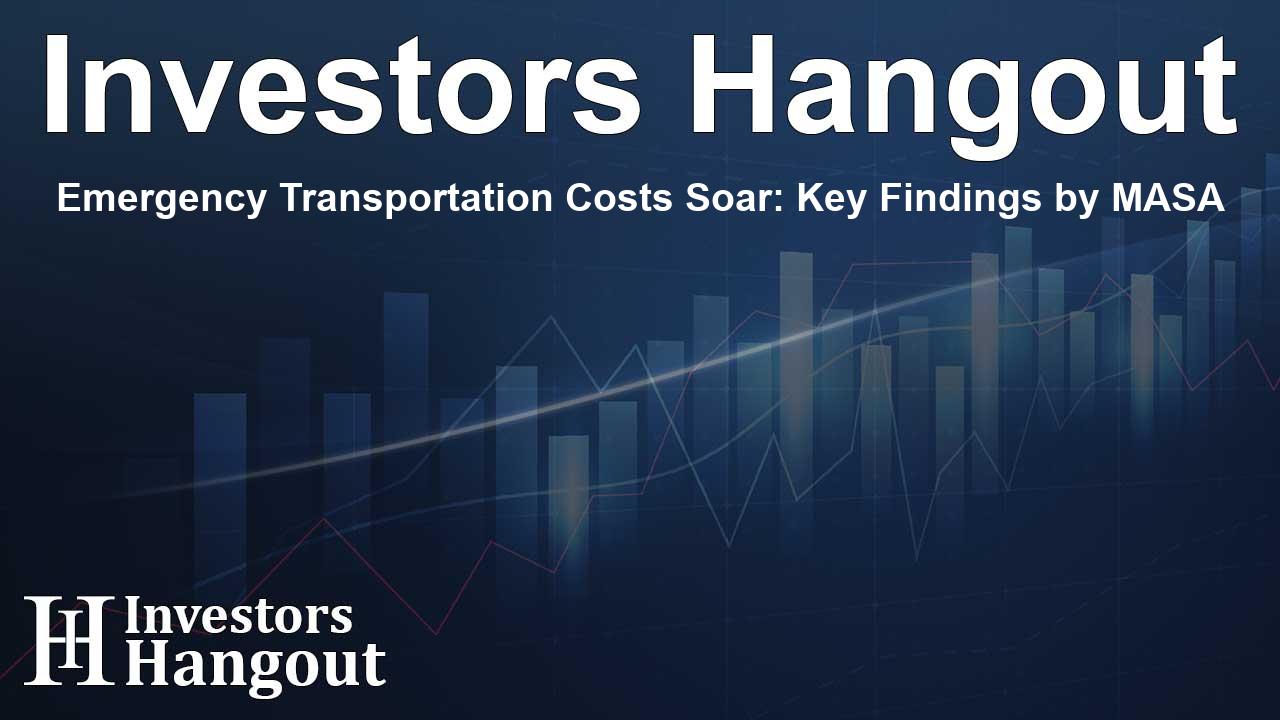Emergency Transportation Costs Soar: Key Findings by MASA

Rising Emergency Transportation Costs: What You Need to Know
Data shows costs have risen by 32 percent over the past four years, driven by widespread health issues.
In recent findings from MASA, a leading provider of Emergency Transportation coverage, it has been revealed that emergency medical transport costs have spiked significantly by more than 32 percent over the past four years. This increase comes despite the fact that utilization rates have remained relatively stable.
The newly released special report, titled "Emergency medical transportation: The true costs – and how they're rising," offers a comprehensive analysis of the reasons behind this troubling trend. It highlights that emergency medical transports are particularly essential for some of the most common health concerns affecting people today. Alarmingly, areas such as rural communities, which already face significant healthcare access issues, are witnessing the steepest increases in transportation costs.
David Harris, the CEO of MASA, emphasized the impact of these rising costs on individuals and families. He stated, "Emergency medical transportation is costly, common, and a contributing factor to some of our health care system's deep inequities. Our latest special report proves each of these points thoroughly. However, patients and their families often don’t realize how expensive emergency medical transport can be until they receive the bill." This serves as a wake-up call for many who may not be aware of the financial implications until an emergency arises.
The national average billed amount for emergency medical transportation currently stands at approximately $2,952 per service. However, those living in rural or non-metropolitan areas can expect even higher costs. For instance, during 2022, the average billed amount in non-metropolitan areas of Arizona was about $13,252, while in Nevada, it was around $13,057. The lack of access to healthcare services in these regions further exacerbates the situation, making such high expenses a significant barrier to receiving adequate medical care.
The report also reveals that emergency medical transportation is frequently utilized for older adults and is often linked to general diagnostic codes representing common symptoms. Specifically, conditions such as chest pain, difficulty breathing, and various circulatory diseases are prevalent among those needing emergency transport. The use of these broad diagnostic codes typically occurs when there isn’t sufficient time to secure a more detailed diagnosis, pointing to urgent medical needs.
The extensive analysis underpinning this report comprised a review of over 400,000 claims for emergency medical transport from the year 2022, representing the most up-to-date data available. MASA intends this report to be the first in a series, aimed at providing valuable insights to consumers, employers, and policymakers, helping them to navigate the complexities surrounding medical transportation costs more effectively.
About MASA
Founded in 1974 as Medical Air Services Association, Inc., MASA is the premier provider of Emergency Transportation benefits, designed to supplement healthcare plans by covering out-of-pocket expenses associated with emergency medical transport. With a global presence that includes 14 international locations and services spanning all 50 states, as well as Canada, MASA serves over 2 million members, offering a range of emergency and non-emergency transportation benefits. Coverage extends across the continental U.S., including Hawaii and Alaska, as well as Mexico and Canada, with options for worldwide coverage available for certain plans. For further inquiries, please visit www.masaaccess.com.
Frequently Asked Questions
What did the MASA report reveal about emergency transport costs?
The report indicates that emergency medical transport costs have risen by over 32% in the last four years, despite stable utilization rates.
How much does emergency medical transportation typically cost?
The national average billed cost for emergency medical transportation is approximately $2,952, with higher amounts in rural areas.
Who is most affected by rising transportation costs?
Older adults and individuals in non-metropolitan areas experience the highest costs associated with emergency medical transport.
What is the goal of MASA's report?
The report aims to educate consumers, employers, and policymakers about medical transportation costs and help them make informed decisions.
How long has MASA been in operation?
MASA was founded in 1974 and has since grown to serve millions of members across various regions, providing essential emergency transport services.
About The Author
Contact Evelyn Baker privately here. Or send an email with ATTN: Evelyn Baker as the subject to contact@investorshangout.com.
About Investors Hangout
Investors Hangout is a leading online stock forum for financial discussion and learning, offering a wide range of free tools and resources. It draws in traders of all levels, who exchange market knowledge, investigate trading tactics, and keep an eye on industry developments in real time. Featuring financial articles, stock message boards, quotes, charts, company profiles, and live news updates. Through cooperative learning and a wealth of informational resources, it helps users from novices creating their first portfolios to experts honing their techniques. Join Investors Hangout today: https://investorshangout.com/
The content of this article is based on factual, publicly available information and does not represent legal, financial, or investment advice. Investors Hangout does not offer financial advice, and the author is not a licensed financial advisor. Consult a qualified advisor before making any financial or investment decisions based on this article. This article should not be considered advice to purchase, sell, or hold any securities or other investments. If any of the material provided here is inaccurate, please contact us for corrections.
